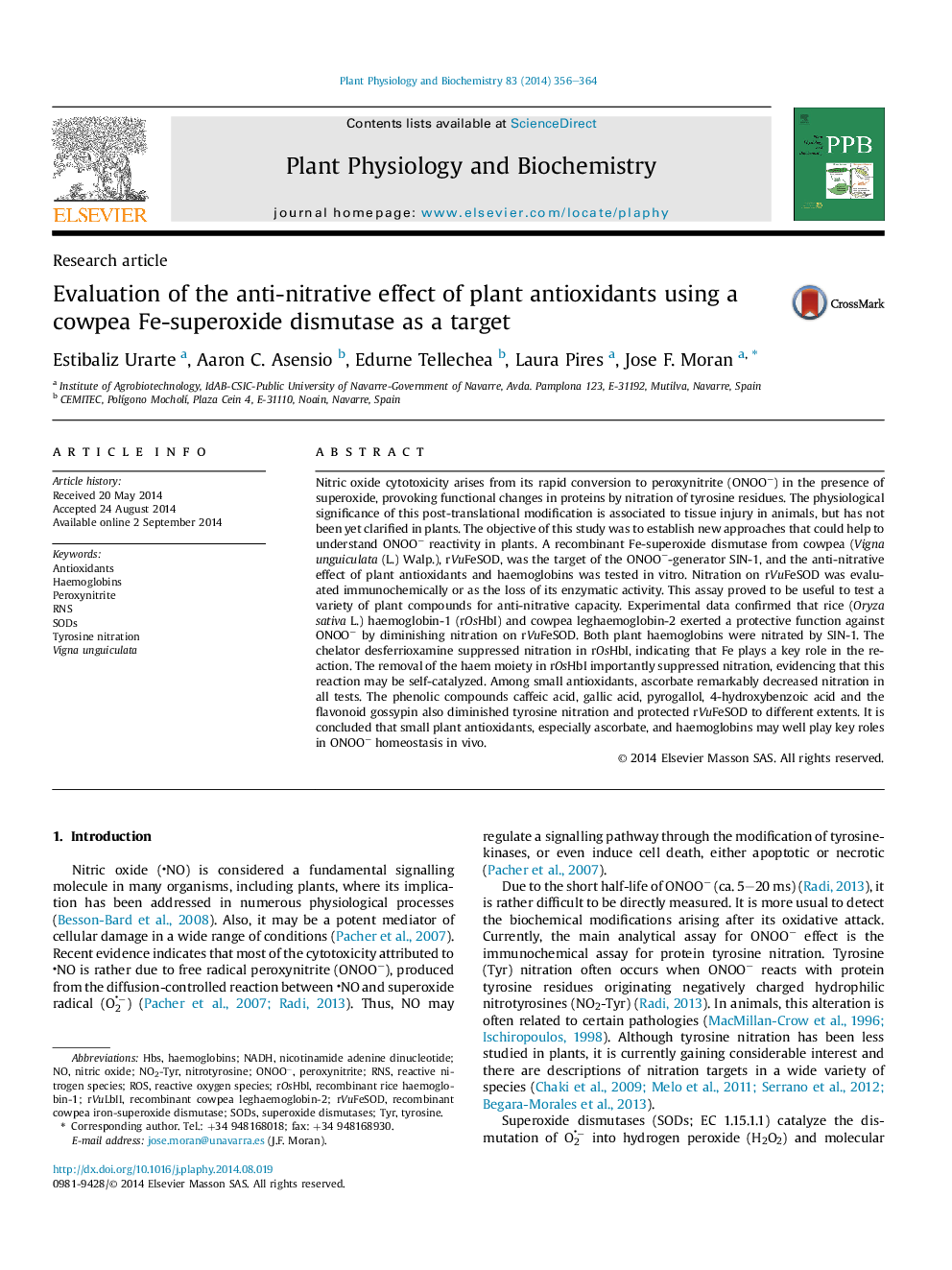| کد مقاله | کد نشریه | سال انتشار | مقاله انگلیسی | نسخه تمام متن |
|---|---|---|---|---|
| 2015790 | 1541938 | 2014 | 9 صفحه PDF | دانلود رایگان |

• A bioassay tests the anti-nitrative effect of compounds on cowpea FeSOD as a target.
• Rice Hb-1 and cowpea Lb-2 are nitrated by SIN-1.
• Hbs, ascorbate and plant aromatic compounds exerted an anti-nitrative effect.
• Fe played an essential role and the haeme group mediated on rOsHbI self-nitration.
• Results suggest that antioxidants may protect ROS/RNS-binding Fe-proteins in vivo.
Nitric oxide cytotoxicity arises from its rapid conversion to peroxynitrite (ONOO−) in the presence of superoxide, provoking functional changes in proteins by nitration of tyrosine residues. The physiological significance of this post-translational modification is associated to tissue injury in animals, but has not been yet clarified in plants. The objective of this study was to establish new approaches that could help to understand ONOO− reactivity in plants. A recombinant Fe-superoxide dismutase from cowpea (Vigna unguiculata (L.) Walp.), rVuFeSOD, was the target of the ONOO−-generator SIN-1, and the anti-nitrative effect of plant antioxidants and haemoglobins was tested in vitro. Nitration on rVuFeSOD was evaluated immunochemically or as the loss of its enzymatic activity. This assay proved to be useful to test a variety of plant compounds for anti-nitrative capacity. Experimental data confirmed that rice (Oryza sativa L.) haemoglobin-1 (rOsHbI) and cowpea leghaemoglobin-2 exerted a protective function against ONOO− by diminishing nitration on rVuFeSOD. Both plant haemoglobins were nitrated by SIN-1. The chelator desferrioxamine suppressed nitration in rOsHbI, indicating that Fe plays a key role in the reaction. The removal of the haem moiety in rOsHbI importantly suppressed nitration, evidencing that this reaction may be self-catalyzed. Among small antioxidants, ascorbate remarkably decreased nitration in all tests. The phenolic compounds caffeic acid, gallic acid, pyrogallol, 4-hydroxybenzoic acid and the flavonoid gossypin also diminished tyrosine nitration and protected rVuFeSOD to different extents. It is concluded that small plant antioxidants, especially ascorbate, and haemoglobins may well play key roles in ONOO− homeostasis in vivo.
Figure optionsDownload as PowerPoint slide
Journal: Plant Physiology and Biochemistry - Volume 83, October 2014, Pages 356–364